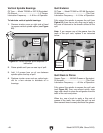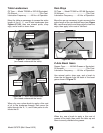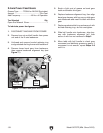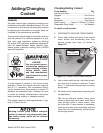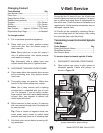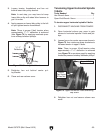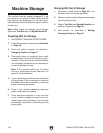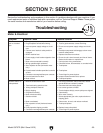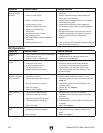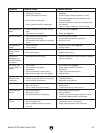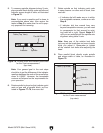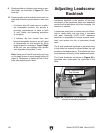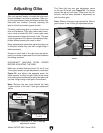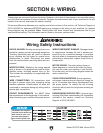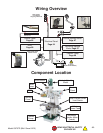
-56-
Model G0757Z (Mfd. Since 02/15)
Symptom Possible Cause Possible Solution
Machine has
vibration or noisy
operation.
1. Workpiece loose.
2. Chuck or cutter at fault.
3. Motor or component loose.
4. V-belt(s) worn or loose.
5. Motor fan rubbing on fan cover.
6. Motor mount loose/broken.
7. Pulley loose.
8. Machine incorrectly mounted.
9. Belts slapping cover.
10. Centrifugal switch is at fault (horizontal
motor only).
11. Motor bearings at fault.
1. Use the correct holding fixture and reclamp
workpiece.
2. Replace unbalanced chuck; replace/resharpen
cutter; use correct feed rate.
3. Inspect/replace damaged bolts/nuts, and retighten
with thread locking fluid.
4. Inspect/replace belts with a new matched set.
5. Fix/replace fan cover; replace loose/damaged fan.
6. Tighten/replace.
7. Re-align/replace shaft, pulley set screw, and key.
8. Tighten mounting bolts; relocate/shim machine.
9. Replace/realign belts with a matched set.
10. Replace.
11. Test by rotating shaft; rotational grinding/loose shaft
requires bearing replacement.
Mill Operations
Symptom Possible Cause Possible Solution
Tool loose in
spindle.
1. Tool is not fully drawn up into spindle taper.
2. Taking too big of a cut.
3. Debris on tool or in spindle taper.
1. Tighten drawbar.
2. Lessen depth of cut and allow chips to clear.
3. Clean tool and spindle taper.
Breaking tools or
cutters.
1. Spindle speed/feed rate is too fast.
2. Cutting tool is too small.
3. Cutting tool getting too hot.
4. Taking too big of a cut.
5. Spindle extended too far down.
1. Set spindle speed correctly or use slower feed rate.
2. Use larger cutting tool and slower feed rate.
3. Use coolant or oil for appropriate application.
4. Lessen depth of cut and allow chips to clear.
5. Fully retract spindle and lower headstock. This
increases rigidity.
Workpiece or tool
vibrates or chatters
during operation.
1. Table locks not tight.
2. Workpiece not secure.
3. Spindle speed/feed rate is too fast.
4. Spindle extended too far down.
5. Quill lock not tight.
6. Gibs too loose in table.
1. Tighten table locks (Page 28).
2. Properly clamp workpiece on table or in vise.
3. Set spindle speed correctly or use slower feed rate
(Page 35).
4. Fully retract spindle and lower headstock. This
increases rigidity.
5. Tighten quill lock (Page 37).
6. Tighten gibs.
Table is hard to
move.
1. Table locks are tightened down.
2. Chips have loaded up on ways.
3. Ways are dry and need lubrication.
4. Table limit stops are interfering.
5. Gibs are too tight.
1. Make sure table locks are fully released.
2. Frequently clean away chips that load up during
operations.
3. Lubricate ways.
4. Check to make sure that all table limit stops are not
in the way.
5. Adjust gibs (Page 61).
Headstock is hard to
raise.
1. Headstock lock(s) or gib is at fault.
2. Headstock leadscrew is binding.
3. Gib is too tight.
1. Loosen/replace lock lever and adjust gib.
2. Clean and relubricate headstock leadscrew and
gears.
3. Adjust gib (Page 61).



